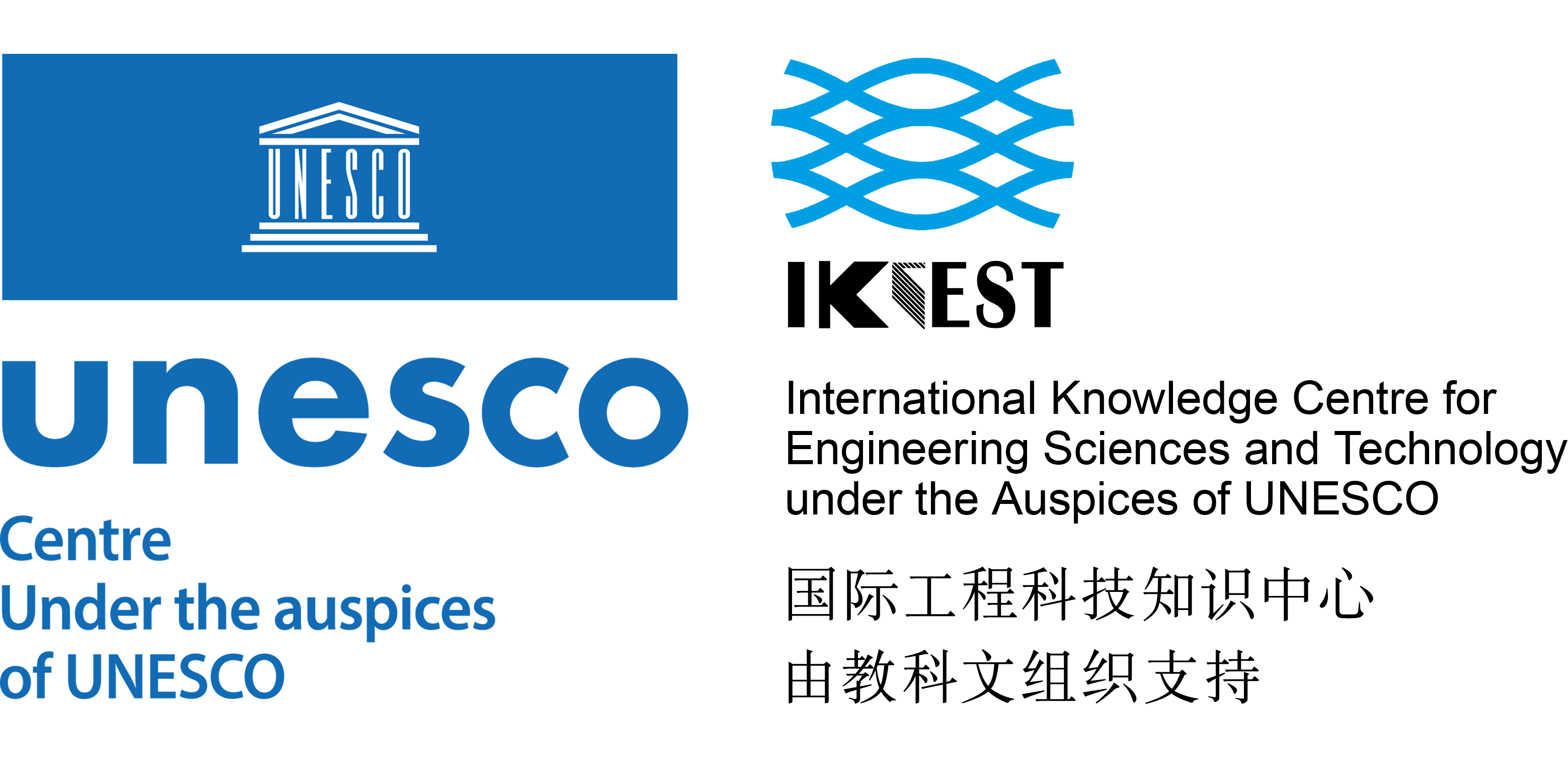Journal
Please choose volume & issue:
-
Development of a simple 2D model for railway track-bed mechanical behaviour based on field data
Keywords:Field data;Track-bed displacement;Dynamic amplification;Vibration attenuation;Propagation of vibrations;2D analytical model;Abstracts:From a practical point of view, it is important to empirically predict the mechanical behaviour of railway track-bed of multi-layers using simple models. In this study, Field monitoring was performed using several accelerometers installed in different layers along a conventional railway track. The accelerometer signals were recorded during the passages of train at 6 different speeds from 60 to 200
km/h. The particle displacements were estimated by integrating the acceleration data. Emphasis was put on the dynamic amplification with speed, the attenuation of vibration over depth and the wave propagation along longitudinal direction in a given layer. The obtained results showed that the measured dynamic amplification with train speed depends on the relationship between the train speed and the surface wave velocity. The amplitude attenuation over depth can be represented by an exponential expression. In addition, it was found that the propagation of vibrations along the longitudinal direction had a sinusoidal shape, exponentially attenuated in distance, similar to the displacements calculated by the Winkler beam model. Based on these three mechanisms identified as well as the field data, a 2D analytical model was developed, allowing the prediction of conventional railway track-bed deflections with the axle loads and train speeds. Comparisons between prediction and measurement showed the relevance of the proposed model. -
Nonlinear seismic behavior of pile groups in cement-improved soft clay
Keywords:Seismic loading;Pile group;Soft clay;Ground improvement;Deep soil mixing;Centrifuge testing;Soil-pile-structure interaction;Nonlinear response;Abstracts:Centrifuge tests were performed to investigate the effects of ground improvement on the seismic behavior of pile groups in soft clay. The soil profile consisted of four lightly overconsolidated clay layers overlying a dense layer of sand. The pile groups had a symmetrical layout consisting of 2×2 piles spaced at 3.0 pile diameters and were driven into both unimproved soft clay and soft clay improved by a simulated Cement Deep Soil Mixing (CDSM) method. The centrifuge model was subjected to seven different earthquake events with peak accelerations ranging from 0.03 to 0.66
g . The foundation level motions of the improved pile groups were different than the surface free-field motion. The foundation level motion for the unimproved pile group was, however, identical to that in the free-field. Higher peak accelerations were observed in the pile cap of the group with smaller CDSM block (GIS) compared to the unimproved pile group (GU) and the group with the largest CDSM block (GIL). Higher pile cap to the soil surface spectral ratios were also obtained for the GIS group in both short and long periods. Cement-Deep-Soil-Mixing was effective in reducing the peak displacements of the GIL pile cap. The peak displacements of the GIS pile cap remained about the same as the GU pile cap. As the size of the ground improvement increased, the fundamental period of the pile groups reduced. The estimated fundamental periods of the GIS and GU pile groups were, however, close to each other. Acceleration and displacement response spectra of the foundation level motions in comparison to the fundamental periods of the pile groups provided insight into the observed acceleration and displacement responses. The adhesion between soft clay and CDSM blocks helped to reduce the soft clay settlement in the vicinity of CDSM blocks compared to the free-field and the vicinity of unimproved pile group. More residual excess pore water pressure was, however, generated in the vicinity of CDSM blocks compared to the free-field and the corresponding location in the unimproved pile group, likely due to vibrations of the CDSM blocks and the piles. -
On seismic vulnerability of highway bridges in Nepal: 1988 Udaypur earthquake (MW 6.8) revisited
Keywords:Highway bridge;Fragility function;DS1;Udaypur earthquake;Earthquake damage;Abstracts:Highway bridges are one of the most important components of transportation system thus continuous operability is expected even after strong to major earthquakes. Nepal is situated in one of the most active seismic regions in the world and devastating earthquakes are frequent, however, to the best knowledge of the author, fragility functions for Nepali highway bridges do not exist until now. This paper is a first attempt to depict the seismic vulnerability of highway bridges in Nepal. Observational data from 1988 Udaypur earthquake were adopted to construct fragility functions for minor damage state DS1. Comparison between the constructed fragility curve with other observational fragility curves for similar damage state highlighted that Nepali highway bridges can be affected minor damage even in very low peak ground acceleration.
-
Dynamic 2.5D Green's functions for moving distributed loads acting on an inclined line in a multi-layered TI half-space
Keywords:2.5D Green's functions;Dynamic stiffness method;Transversely isotropic medium;Multi-layered half-space;Dynamic responses;Abstracts:Dynamic two and a half dimensional (2.5D) Green's functions for a multi-layered transversely isotropic (TI) half-space are developed by using the dynamic stiffness method combining with the inverse Fourier transform. The 2.5D Green's functions correspond to solutions of uniformly distributed loads acting on part of a multi-layered TI half-space on a line which is inclined to the horizontal and moving along a horizontal straight line with a constant speed. Solutions in the frequency and wavenumber domains are first obtained, which are expressed as the summation of the responses restricted in the loaded layer and of the corresponding reaction forces. Results in the time and space domains are then recovered by Fourier synthesis of the frequency and wavenumber responses which in turn are obtained by numerical integration over on one horizontal wavenumber. The derived Green's functions are verified through comparison with the existing solutions for the isotropic medium that is a special case of the more general problem addressed. Parametric studies are performed in both the frequency and time domains, which show that dynamic responses are highly related to the TI parameters, the load frequency, the load speed and the TI layer. In addition, as an application example, these Green's functions combined with the indirect boundary element method (IBEM) are used to solve the 3D wave scattering of a 2D tunnel embedded in a multi-layered TI half-space. Comparison between the obtained surface displacement amplitudes with those of de Barros and Luco [12] for the isotropic case reinforces the validity and reliability of the presented formulations.
-
Earthquake responses of near-fault building clusters in mountain city considering viscoelasticity of earth medium and process of fault rupture
Keywords:Earthquake response;Building cluster;Surface topography;Viscoelastic earth medium;Near fault;Investigated lump;Abstracts:A new algorithm is proposed to implement viscoelastic wave propagation in earth medium with surface topography by introducing history variables into integral type GZB constitutive equations and by using the recursive formulae of these history variables. Combining the proposed algorithm with the flexural wave algorithm for frame structure and the algorithm for bidirectional wave propagation, a new type of integrated method is developed for earthquake response analyses of near-fault building clusters in mountain city due to rupture of causative fault. The earthquake responses of building clusters of frame structures situated at different sites of a mountain in Chongqing city, China, are studied during a hypothetical 6.2 near-fault earthquake. The numerical results show that, for the multi-story buildings, the maximum peak value of beam-end bending moments appears in the building on the hill top and the earthquake risk positions are mainly at the bottom and/or the top of the buildings. For the high-rise buildings, the maximum peak value of beam-end bending moments appears in the building on the mountainside and the earthquake risk positions are mainly at the bottom and/or the middle of the buildings.
-
Evaluation of dynamic properties of sandy soil at high cyclic strains
Keywords:High shear strain;Shear modulus;Damping ratio;Strain-controlled test;Cyclic triaxial test;Hysteresis loop;Abstracts:Dynamic loading conditions, such as earthquakes, may result in the generation of high shear strain (>5%) in the soil. Conventionally, dynamic properties of soils are estimated from the tests conducted up to a shear strain of 1% by considering Symmetrical Hysteresis Loop (SHL). However, it is commonly observed that the hysteresis loops become progressively asymmetric with increasing shear strain, which leads to the over- or under-estimation of the conventionally evaluated dynamic properties. Hence, it is necessary to adopt a modified methodology of evaluating the dynamic properties of saturated sands based on the actual Asymmetrical Hysteresis Loop (ASHL). Strain-controlled cyclic triaxial tests have been conducted, for a peak shear strain range of 0.015–4.5% at 1
Hz loading frequency, on test specimens prepared at different relative density (30–90%) and confining stress (50–150 kPa). Although, the shear modulus evaluated considering SHL and ASHL are on close agreement, the damping ratio evaluated considering SHL is approximately 40–70% lesser than that obtained by considering ASHL. Moreover, in contrast to the classical curves as largely applied in geotechnical engineering, a noticeable decrement of the damping ratio is observed beyond 0.75% shear strain. -
Earthquake probability in Taipei based on non-local model with limited local observation: Maximum likelihood estimation
Keywords:Maximum likelihood estimation;Empirical model adjustment;Sanchiao fault in Taipei;Abstracts:Many earthquake empirical models were developed based on the statistics in the past. However, it is commonly seen that a non-local model was applied to a local study without any adjustment. In this paper, a new algorithm using maximum likelihood estimation (MLE) to adjust a non-local model for local applications was presented, including a case study assessing the probability of major earthquake occurrences in Taipei. Specifically, considering the fault length of 36
km and slip rate of 2 mm/yr, it suggests the Sanchiao (or Shanchiao) fault could induce a major earthquake with magnitude M w -
Improving microseismic event and quarry blast classification using Artificial Neural Networks based on Principal Component Analysis
Keywords:Microseismic classification;Microseismic event and quarry blast;Principal Component Analysis (PCA);Artificial Neural Networks (ANN);Matthew's Correlation Coefficient (MCC);Abstracts:The discrimination of microseismic events and quarry blasts has been examined in this paper. To do so, Principal Component Analysis (PCA) and Artificial Neural Networks (ANN) have been used. The procedure proposed has been tested on 22 seismic parameters of 1600 events. In this work, the PCA has been used to transform the original dataset into a new dataset of uncorrelated variables. The new dataset generated has been used as input for ANN and compared to Logistic Regression (LR), Bayes and Fisher classifiers, which classify microseismic events and quarry blasts. The results have shown that PCA is effective for rating variables and reducing data dimension. Furthermore, the classification result based on PCA has been better than those based Ref.
[22] and without PCA methods. Moreover, the ANN classifier has obtained the best classification result. The Matthew's Correlation Coefficient (MCC) results of the PCA, Ref.[22] and without PCA based methods have reached 89.00%, 73.68% and 82.04%, respectively, thus showing the reliability and potential of the PCA based method. -
Dynamic geotechnical properties evaluation of a candidate nuclear power plant site (NPP): P- and S-waves seismic refraction technique, North Western Coast, Egypt
Keywords:Nuclear Power Plant;Seismic Refraction Technique;Geotechnical;Egypt;Abstracts:Determination of the dynamic geotechnical properties and V
s 30 of soil and rocks from seismic wave velocities serves as essential inputs for a foundation design cognizant of seismic site response and rock strength. This study evaluates a site which was suggested for a Nuclear Power Plant (NPP) in El-Dabaa area, north western coast of Egypt. On the near subsurface geology is made up of a thick succession of limestone overlain by a thin layer of soft soil. Assessment of geotechnical materials and Vs 30 of the near sub-surface lithological layers are required for design of the foundation of critical structures like turbo-generator and reactor buildings. Interpretation of ninety one shallow P-waves and S-waves seismic refraction profiles distributed within the study area in conjunction with data of 76 boreholes were undertaken to delineate the dynamic properties of shallow soil for construction NPP. The velocity of the P- and S-waves were acquired and interpreted using SeisImager Software Package, then the results were used to build a velocity-depth model to estimate the depth to the bedrock and the thicknesses of overburden layers. This model was verified using boreholes data dissected the seismic profiles to improve the final velocity depth model. The depth to bedrock was determined from both shallow seismic refraction profiles and boreholes. Vs 30, elastic moduli and dynamic geotechnical parameters were calculated and the site was classified as a National Earthquake Hazard Reduction Program (NEHRP) class “B”. The values of seismic velocities, the engineering consolidations, and the strength parameters showed that the bedrock in the study area is characterized by more competent rock quality. -
Numerical modelling of micro-seismic and infrasound noise radiated by a wind turbine
Keywords:Wind turbines;Infrasound noise;Micro-seismicity;Fluid structure interaction;Boundary element method;Large-scale problems;ACA/BEM;Abstracts:Infrasound, low frequency noise and soil vibrations produced by large wind turbines might disturb the comfort of nearby structures and residents. In addition repowering close to urban areas produces some fears to the nearby residents that the level of disturbance may increase. Due to wind loading, the foundation of a wind turbine interacts with the soil and creates micro-seismic surface waves that propagate for long distances and they are able to influence adversely sensitive measurements conducted by laboratories located far from the excitation point. A numerical study on the creation and propagation of those waves to the surrounding area is the subject of the present work. Besides, the contribution of those waves to airborne sound generated by the soil-air interaction is also investigated. All numerical simulations are performed with the aid of the Boundary Element Method (BEM), which is ideal for solving such problems since it takes automatically into account the radiation conditions of the waves and thus only the soil-foundation interface and the free surface of the surrounding soil are needed to be discretized. Foundation and soil are considered as linearly elastic materials with interfacial bonding. The frequency domain Helmholtz equation is employed for the simulation of acoustic waves. Numerical results dealing with the airborne and soil borne noise propagation and attenuation are presented and disturbances that might be caused to nearby and far-field structures are discussed.
Hot Journals
- Risk Breakdown Matrix for Risk-Based Inspection of Transportation Infrastructure Projects
- Social Control in Outsourced Architectural and Engineering Design Consulting Projects: Behavioral Consequences and Motivational Mechanism
- 2022 Best Paper Award
- Hold-Ups and Failures in Negotiated Order: Unearthing the Nuances of Rework Causation in Construction
- Prevalence and Risk Factors for Poor Mental Health and Suicidal Ideation in the Nigerian Construction Industry
- CFRP–Cable-Stayed Bridge Hybrid with Partial Suspension and a Span Exceeding 3,000 m: Concept, Optimization, and Construction
- Impact of Wind Load Characteristics on Computed Bridge Stay-Cable Forces Used for Bridge Health Monitoring
- Weak-End and Frequency Detection of Elastically Supported Bridges by Contact Residual Response of Two-Axle Test Vehicle in a Round Trip
- Development of Performance-Based Fragility Curves of Coastal Bridges Subjected to Extreme Wave-Induced Loads
- An Analytical Model to Evaluate Short- and Long-Term Performances of Post-Tensioned Concrete Box-Girder Bridges Rehabilitated by an Ultrahigh-Performance Concrete Overlay
- Three-Dimensional Velocity Distribution in Straight Smooth Channels Modeled by Modified Log-Law
- Experimental Investigation on Flow Past Two and Three Side-by-Side Inclined Cylinders
- An Experimental Investigation of Rotor–Box Aerodynamic Interaction 1
- Modeling Gas–Liquid Flow Between Rotating and Nonrotating Annular Disks
- Entry Length Requirements for Two- and Three-Dimensional Laminar Couette–Poiseuille Flows
Advanced Materials (3,745)
- Structured Perovskite Light Absorbers for Efficient and Stable Photovoltaics
- Strategies for High‐Performance Solid‐State Triplet–Triplet‐Annihilation‐Based Photon Upconversion
- Atomic Engineering Catalyzed MnO2 Electrolysis Kinetics for a Hybrid Aqueous Battery with High Power and Energy Density
- Crystal Adaptronics: Global Performance Indices for Dynamic Crystals as Organic Thermal Actuators (Adv. Mater. 20/2020)
- Enlightening Materials with Photoswitches
Acta Astronautica (1,768)
- Mixed-integer trajectory optimization with no-fly zone constraints for a hypersonic vehicle
- Adaptive control design for active Pogo suppression of large strap-on liquid launch vehicles
- Machine learning based approach for modeling and forecasting of GPS–TEC during diverse solar phase periods
- Effect of two-dimensional micro-cavity surface on hypersonic boundary layer
- Investigation on burning behaviors of aluminum agglomerates in solid rocket motor with detailed combustion model








 User Center
User Center My Training Class
My Training Class Feedback
Feedback





